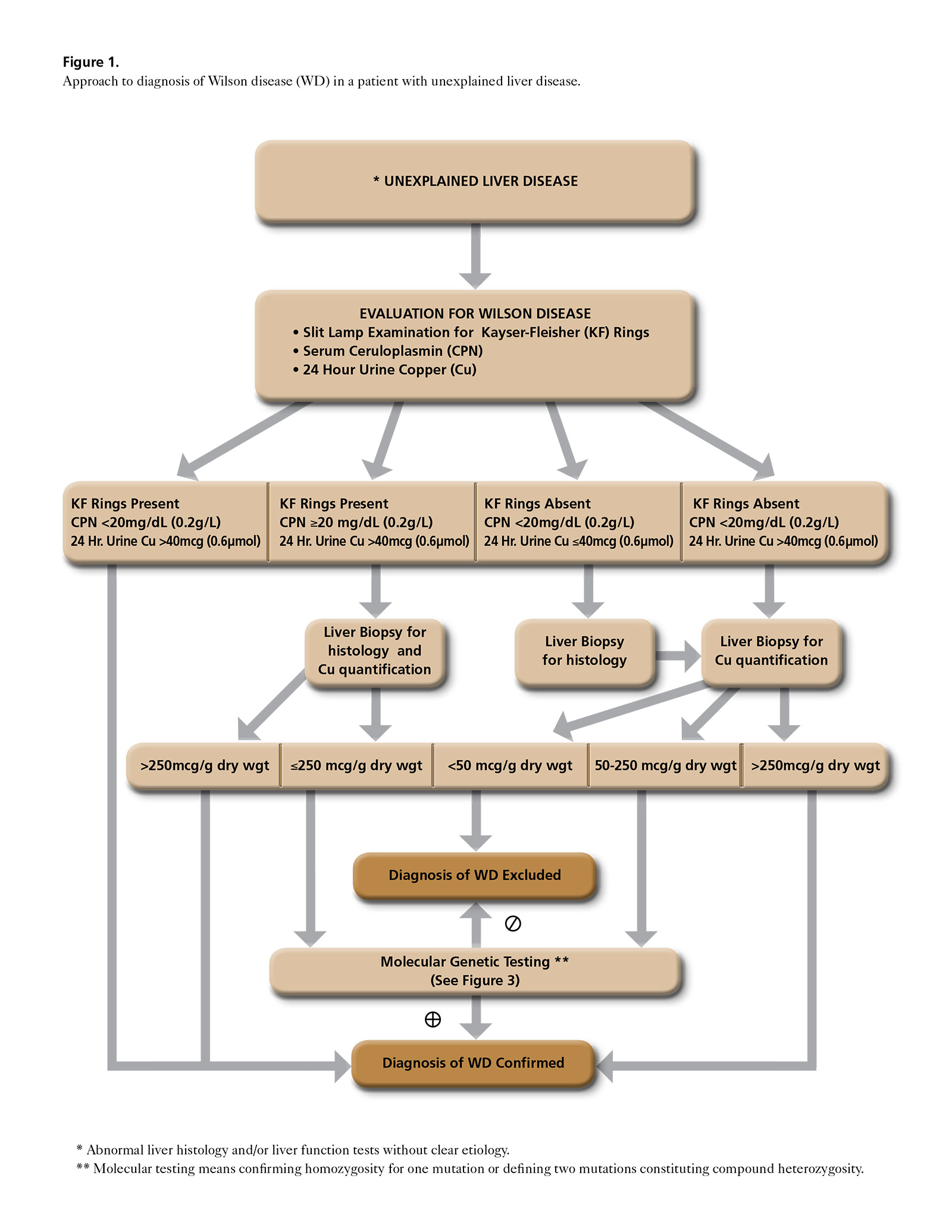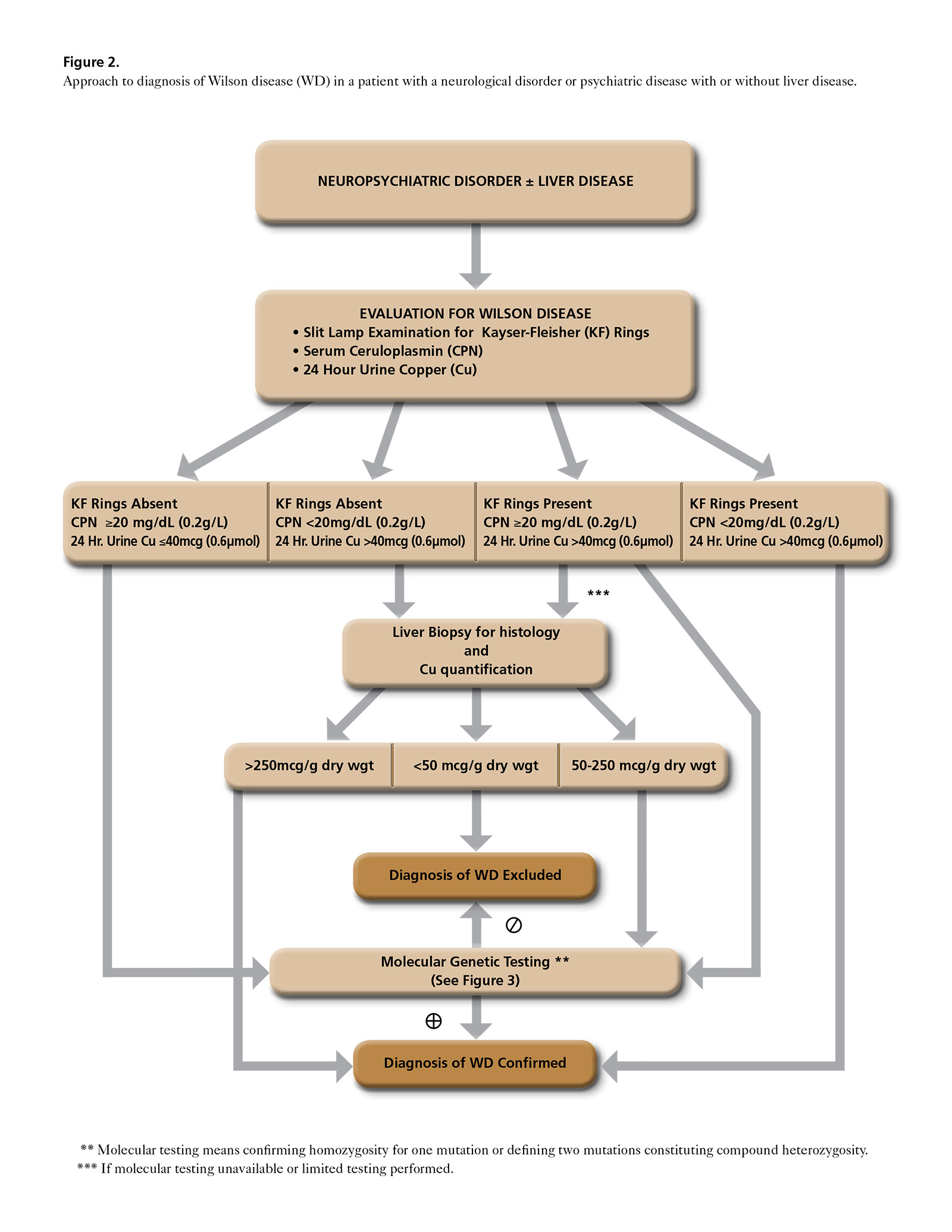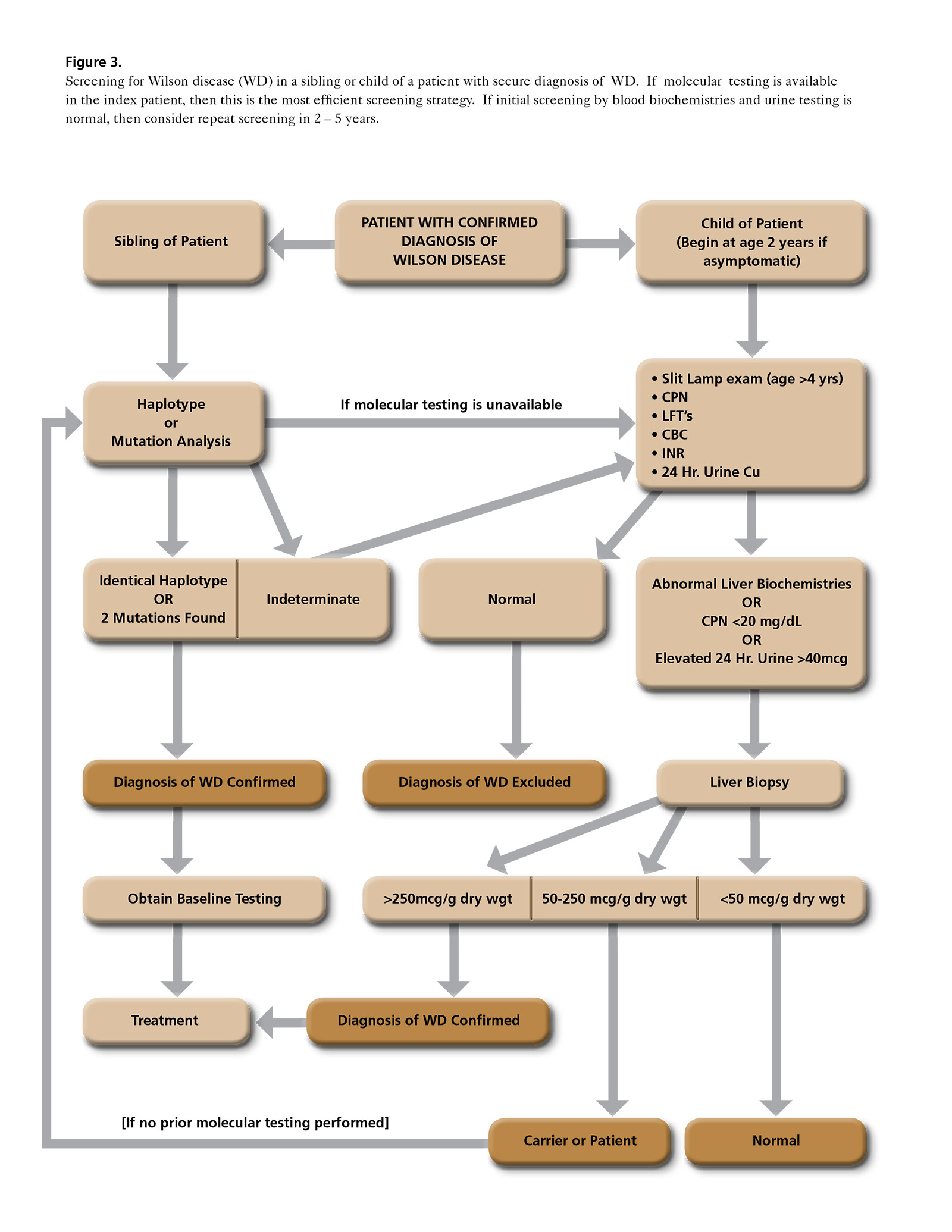New guidance for Diagnosis, Treatment and Management of Wilson Disease
How is Wilson disease diagnosed?
 The diagnosis of Wilson disease is made by relatively simple tests. The tests can diagnose the disease in both symptomatic patients and people who show no signs of the disease. These tests can include:
The diagnosis of Wilson disease is made by relatively simple tests. The tests can diagnose the disease in both symptomatic patients and people who show no signs of the disease. These tests can include:
- Opthalmalogic slit lamp examination for Kayser-Fleischer rings.
- Serum ceruloplasmin test.
- 24-hour urine copper test.
- Liver biopsy for histology and histochemistry and copper quantification.
- Genetic testing, haplotype analysis for siblings and mutation analysis.
It is important to diagnose Wilson disease as early as possible, since severe liver damage can occur before there are any signs of the disease. Individuals with Wilson disease may falsely appear to be in excellent health.




